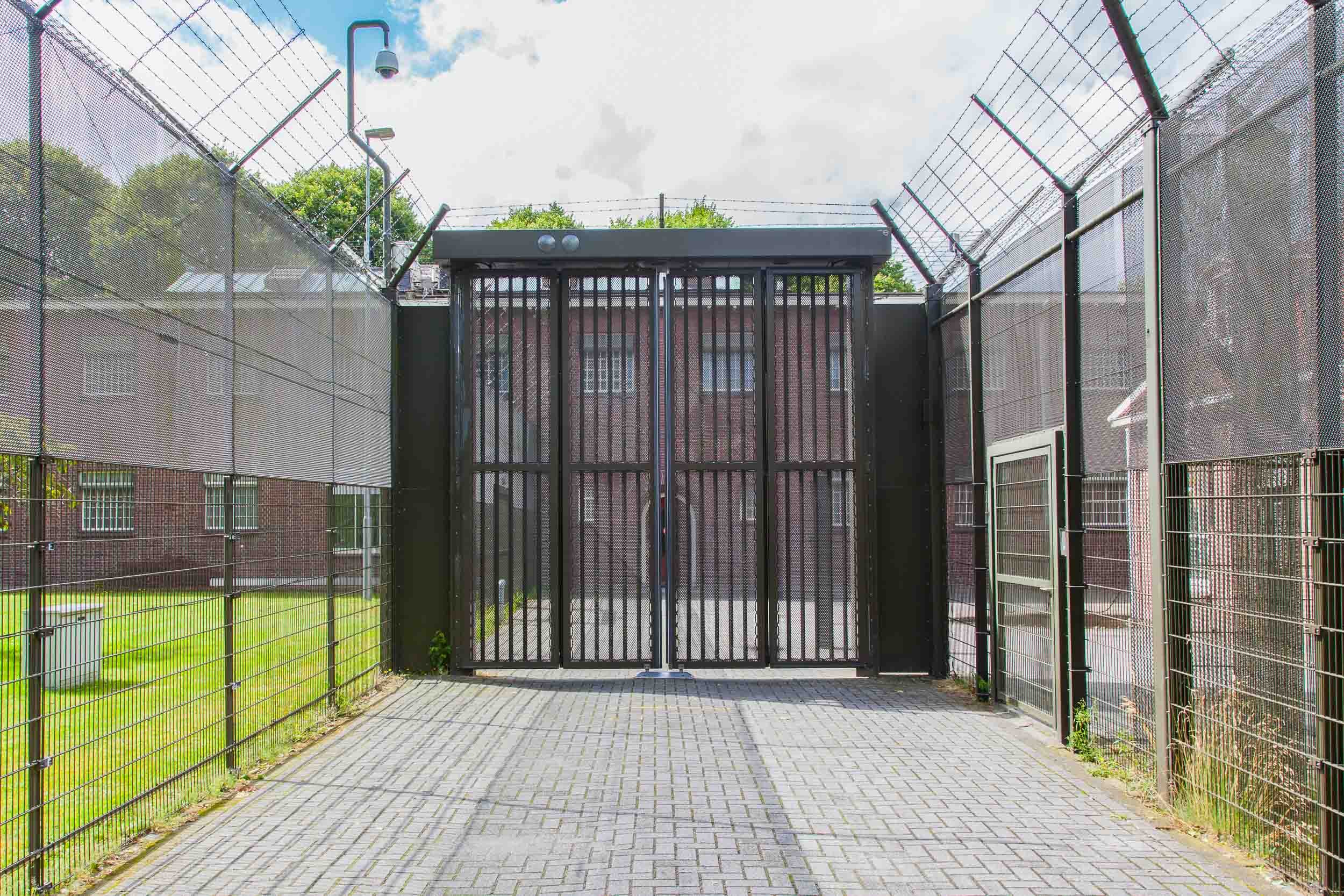
By Carlota Morgado de Almeida, NH Center for Justice and Equity

Anthony Payton shares insights on building a life after incarceration and overcoming re-entry challenges with mental health, probation, and rehabilitation.
“A little over four years ago, I was released from a federal institution after serving nearly seven years of a ten-year sentence. Three days into my incarceration, I found out from my then-fiancée that she was pregnant. Four years later, as my father lay on his deathbed from stage 4 pancreatic cancer, I would say my final goodbye to him from a federal prison phone. I left behind both painful and happy memories. I’d left behind men with whom I forged relationships.”
Anthony Payton, publisher of a Nashua-based news outlet and re-entry advocate, walked out of prison with a gym bag filled with photos and memories of years missed. He had a ready-made resume, new gray hairs on his chin, a social security card, and the money he had saved up while working in the prison mess hall. For Payton, “the most important thing with me that day was my mindset. It had changed for the better. I took it upon myself to recalibrate my navigational system, which was clearly off-course.”
Having left behind a small entertainment company, two stepsons, a fiancé’, and an illegal operation that took care of any financial issues, Payton returned to society as a single man who had lost his father and now had a daughter—a man who had to rebuild his life.
“I was blessed. I had a great support system every step of the way after being released from prison. But consider the countless men and women who leave prison with nothing or no support system. They’re expected to thrive in a world that has been moving without them. There are countless things to consider that will help men and women succeed in society post-incarceration.”
About 600,000 people are released from state and federal prisons each year in the United States, and more than two-thirds of individuals are re-arrested within three years of their release, and half are re-incarcerated (Assistant Secretary for Planning and Evaluation). Payton sees many opportunities and needs to prevent this and stop the cycle for many men and women.
Unmet mental health needs are one of the biggest challenges of reintegration
For those leaving incarceration, a major question is: “Am I supposed to forget about what I saw and was involved in? Forget about the violence and conditions that I just left?”
According to the National Alliance for Mental Health (NAMI), nearly 2 in 5 of the over 2 million people held in our nation’s jails and prisons have a history of mental illness. Of those who are incarcerated, 95% will face a variety of challenges as they re-enter their communities upon being released.
Incarcerated individuals released back into society are among those most in need of mental health services and support. Similarly to those who have experienced or witnessed violence in the armed forces, many of them struggle with Post-Traumatic Stress Disorder (PTSD), stemming from being exposed to violence in prison and the life experiences prior. Added to this is the stigma, discrimination, instability, and isolation that can occur during and after incarceration.
Unfortunately, according to Payton’s experience, most post-release programs offering mental and behavioral health support focus on substance abuse. This is a significant issue – especially in New Hampshire, where more than 50% of individuals incarcerated in state prisons have an opioid use disorder, but it leaves a vacuum of support for people dealing with other issues.
“I’m a firm believer in the value of taking care of one’s mental health. There is a process where a person has to adjust back to the normalcy of society. You don’t just leave those conditions without some lingering effects. You learn how to navigate seamlessly around 99 different personalities in the most volatile environments.”
For some, leaving prison can be as stressful as entering prison. According to a 2019 study exploring the links between incarceration and health, previously incarcerated individuals may experience chronic stress because of reintegration challenges. And many of those stressors are unique to the incarceration experience and finding other people who can understand those specific issues can be difficult.
“It took me some time to feel comfortable eating with my back toward any doors. After years of playful teasing from significant others and friends, I finally stopped washing my boxer briefs in the showers. Some things just stick with you. I’m extremely appreciative that the mental health of currently and formerly incarcerated people is now part of the discussion.”
Are probation and parole an effective vehicle for successful re-entry?
Probation and parole are designed to lower prison populations and then help people succeed in the community. However, according to the Council of State Governments, 60% of prison admissions in New Hampshire were due to supervision violations. This suggests that the system for support in probation and parole could be strengthened to make success more likely and to prevent re-incarceration. For Payton, the chance of a former inmate being assigned to helpful supervision is purely the luck of the draw.
“Some officers are lenient and some are looking to send you back to prison for the slightest infraction. I ended up with a laid-back and helpful probation officer who let me autopilot my life.”
Knowing he would succeed regardless of which officer he was assigned, Payton notes that the relationship between “the supervisor” and “the supervised” is usually adversarial. He adds that supervision is easier when officers see your intent and potential.
“This probation officer was very helpful and always sought to assist anyone on his caseload. Although he was likely overworked, he still maintained good communication with me. I gave him a few clean urines, kept gainful employment, and did everything that I needed to do to get through supervision successfully. After a while, he eventually consented to let me visit Brooklyn if I wished.”
This opposing relationship might not be a matter of individual moods. Despite New Hampshire’s attempt to improve outcomes for those under supervision by introducing Senate Bill 251, the state’s parole system earned a D- rating from the Prison Policy Initiative. In a setting where people on parole can be sent back to prison for associating with anyone who has a felony conviction, parole, and probation rules can disrupt support networks and the re-entry process.
Educate and rehabilitate: how institutions can support re-entry
Beyond mental health and supervision, there are many residual effects left after paying for your crimes. Those released back into society must fight the stigma and adversity on every level, including housing and employment. Race is also at play here, as Black and Hispanic people are disproportionately represented in New Hampshire’s prisons and jails, and their re-entry journey intersects with the disparities and disadvantages already faced by people of color in the Granite State.
Payton believes that work experience acquired while incarcerated should be regarded as valuable experience by any employer, as it can provide a qualified candidate with a chance at employment. Education and having a marketable skill have been shown to lower the likelihood of recidivism due to financial difficulty.
“My 5-year stint in the prison mess hall was golden globe-worthy. We were encouraged to pursue certifications in Culinary Arts and complete apprenticeships through the Department of Labor. These apprenticeships focused on the various trades being taught in the prison, including everything from computer coding to food service management, to HVAC. Some prisons even offer free college courses; others connect you with paid correspondence courses. Those college credits are transferrable, which is monumental for someone looking to increase their earning potential.”
According to The Rand Corporation, educational programs for inmates cost between $1,400 and $1,744 per year. However, these programs can save between $8,700 and $9,700 per inmate in costs associated with re-incarceration. A 2018 report from the same organization found that taxpayers’ three-year return on investment is nearly 400%, or nearly $5 saved for every $1 spent.
“Keeping someone in prison is costly. However, by providing college courses and skills training to the incarcerated population, we can save money in the long run and prepare them for the ever-changing job market. Prison can be a criminal networking gala, so we need to supply our incarcerated population with education and tools to succeed in society post-release.”
Payton is adamant that we need to continue working on every level. These are some of the key solutions he envisions for a society that supports former prisoners’ reintegration:
- Spend taxpayer dollars in the most statistically proven effective way, increasing programs to make prisoners employable and educated.
- Increase mental health awareness and counseling. Some of these underlying issues may affect their ability to function in society.
- Increase post-release programs and organizations that promote wellness and support.
- Incentivize businesses and landlords to hire/house qualified formerly incarcerated men and women.
- Utilize the formerly incarcerated to work with at-risk youth. Not just as a worker but as a career, encourage/pay for this employee to get degrees/certifications in social work/mental health.
- Civic engagement. Identify and erase draconian laws that increase prison time for nonviolent crimes like drug charges and other misdemeanors.
- Increase court diversion programs for at-risk youths.
To support our men and women to reenter society and begin to enrich the lives of families and communities, Payton leaves the following suggestion:
“While I don’t recommend just befriending anyone who was released, I implore you to listen and pay attention. You’ll see who is ready for change and who isn’t. When you find a ready man or woman, the simplest information, such as filling out a FAFSA form for college or recent career trends, can help this person navigate the unsteady waters of post-release. That same person can wind up next to your child at the grocery store or laundry mat. Let’s increase the odds that this person is a productive member of society and no longer a threat.”
Click here to see the reentry resources available in New Hampshire.
About Anthony Payton

Anthony Payton, a Brooklyn-born visionary now living in New Hampshire, spearheads Nashua Digital, a Nashua-based online news outlet. Founder of Anthony Payton Media, L.L.C., his dedication extends to impactful work with Granite State News Collaborative and The Fitz Center. As a versatile award-winning columnist, journalist, and podcast host, his work, including [The Common Ground Initiative], covers topics from patriotism to mental health. Recently selected as a TEDx speaker, Anthony’s commitment to media innovation and community service shines through. Deeply involved in advisory boards, he actively supports at-risk youth and those affected by incarceration, aiming to foster positive change at both individual and community levels.





